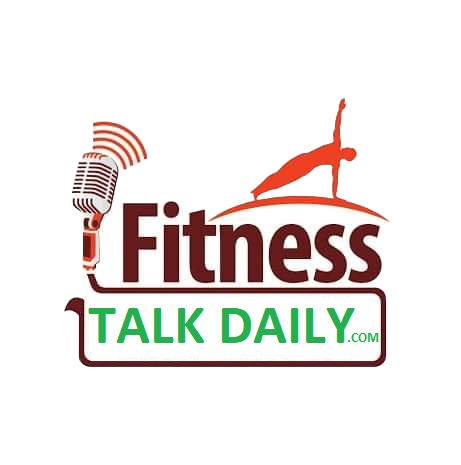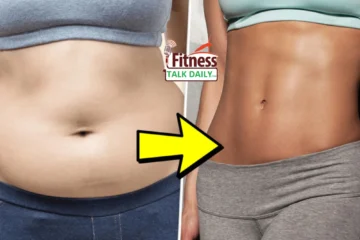Embarking on a health journey is an admirable enterprise. but it’s important to keep matters exciting to hold lengthy-term dedication. One manner to do that is by incorporating a wide range of exercises into your habitual.
Benefits of Regular Exercise
- Feet Happier
- Stay Strong
- Boost Energy
- Healthy Heart
- Breathe Better
- Maintain Weight
- Relax and Unwind
- Sleep Soundly
- Boost Confidence
- Stay Healthy Inside
- Sharper Mind
- Longer Life
Different Types of Workouts
Cardiovascular Workouts
Running and Jogging
Cycling
Dance Workouts
Strength Training
Bodyweight Exercises
Weight Lifting
Enhances metabolism.
Resistance Band Workouts
Mind-Body Connection
Yoga
Pilates
Tai Chi
High-Intensity Interval Training (HIIT)
Sports-Inspired Workouts
Basketball Drills
Soccer Drills
Tennis Conditioning
Aquatic Workouts
Swimming
Water Aerobics
Rowing
Functional Fitness
CrossFit
Obstacle Course Training
Balance and Stability Exercises
Flexibility and Mobility
Stretching Routines
Foam Rolling
Group Classes
Zumba
Spinning
Bootcamp
Home workouts
Warm-up:
Start with 5-10 minutes of light cardio, such as jumping jacks, high knees, or marching in place.
Circuit:
Perform each exercise in this circuit for the specified number of repetitions.
- Bodyweight Squats
- Push-ups
- Lunges
- Plank
- Glute Bridges
- Tricep Dips
Cool-down:
After completing your workout with 5-10 minutes do stretching.
Understanding Different Fitness Levels
Diving-specific exercises are essential to apprehend that health stages vary amongst individuals. Beginners might have limited experience, while experts have advanced training techniques.
Components of a Fitness Routine
A well-rounded fitness routine comprises various elements:
- Cardiovascular Exercises: Boost your heart health and burn calories.
- Strength Training: Build muscle mass and enhance metabolism.
- Flexibility and Mobility: Improve range of motion and prevent injuries.
- Nutrition: Fuel your body with the right foods for energy and recovery.
- Rest and Recovery: Allow your muscles to heal and grow.
Designing Fitness Routines for Beginners
Start Slowly:- Begin with activities you’re comfortable with, like brisk walking, swimming, or light jogging.
Increase Gradually:- Slowly make things more challenging. Increase the time and effort you put in, but don’t rush.
Mix Cardio:- Include activities that get your heart pumping (like walking or swimming).
Full-Body Strength:- Do bodyweight squats. just like sitting and standing and try modified push-ups to strengthen your muscles.
Stretching Matters:- Don’t forget to stretch before and after your workout.
Rest and Recover:- Your body needs rest days to recover. Try for at least one or two days off from intense workouts each week.
Proper Gear:- Wear comfortable shoes and clothing that allow you to move freely.
Set Goals:- Start with small goals, like exercising some days per week, and gradually increase as you get stronger.
Listen to Your Body:- If something hurts or feels uncomfortable, stop and rest.
Elevating Workouts for Intermediate Individuals:
Cardio Boost:- Step up your cardio by trying activities like running or cycling. It gets your heart pumping and boosts endurance.
Resistance Training:- Add weights or resistance bands to your routine. This helps in strength-building muscles.
Flexibility Matters:- Do dynamic stretches to improve your flexibility.
Split Routines:- Work for specific muscle groups on different days. This lets you focus better and avoid overworking any one area.
Challenge Yourself:-Increase the weight, intensity, or reps gradually to keep progressing.
Rest and Recovery:- Even at this level, rest days are vital. Your muscles need time to repair.
Nutrition Balance:- Support your workouts with a balanced diet rich in protein, healthy carbs, and essential nutrients.
Monitor Progress:- Keep track of what you’re doing. Write down weights, times, and reps to see how far you’ve come.
Seek a coach:- Consider seeking advice from a fitness coach to avoid any kind of injury.
Advanced Fitness Strategies for Experts:
HIIT Power:- Try high-intensity interval training (HIIT) for a real challenge. Short bursts of intense exercise followed by brief rests push your limits.
Plyometrics Exercise:- Give plyometric exercises a shot. These explosive movements help in building strength.
Master Weight:- Lifting Explore advanced weightlifting techniques like supersets and drop sets.
Target Muscles:- Focus on muscle-specific training. Work on individual muscle groups.
Rest:- Make a rest day to prevent burnout while still keeping your momentum.
Nutrition Precision:- Fine-tune your diet to match your advanced workouts. protein and nutrient intake are crucial.
Track and Adjust:- Keep tracking your progress and adjust your routine as needed. Continual adaptation is key.
Effective Workout Routine
Make a workout routine. That will suit your goals and lifestyle is crucial for long-term success.
- Assess Your Fitness Level
- Choose the Right Exercises
- Determine Frequency and Duration
- Warm-Up and Cool-Down
- Progression is Key
- Importance of Proper Form and Technique
Things to Avoid During Your Workout
- Overdoing It
- Skipping Warm-ups
- Bad Form
- Neglecting Hydration
- Not Breathing Properly
- Comparing Yourself
- Ignoring Pain
- Rushing Through Reps
- Skipping Cool-downs
- Not Listening to Your Body
- Exercising on an Empty Stomach
- Not Resting
- Being Impatient
- Using Too Much Weight
- Focusing Only on One Thing
Choosing the Right Workout
When deciding on an exercise, recollect your goals. not only that focus on your health degree, and any physical obstacles you can have. Search guidance from fitness specialists can help you make informed decisions.
Food for building Muscles
Protein Power
Proteins are like the building blocks for your muscles. Foods rich in protein help repair and grow your muscles. Good sources of protein include:
– Chicken
– Turkey
– Eggs
– Greek yogurt
– Fish (like salmon or tuna)
– Lean beef or pork
– Plant-based sources like beans, lentils, and tofu
Carbs for Energy
Carbohydrates are like your body’s fuel. They give you energy for workouts and help your muscles recover. Choose healthy carbs like:
– Whole grains (like brown rice, quinoa, and whole wheat bread)
– Oats
– Sweet potatoes
– Fruits (like bananas, berries, and apples)
– Vegetables (like broccoli, spinach, and carrots)
Healthy Fats:
Good fats are important for overall health and can support muscle growth too. Try to include:
– Nuts and seeds (like almonds, walnuts, and chia seeds)
– Avocado
– Olive oil
– Fatty fish (like salmon and mackerel)
Vitamins and Minerals:
Your muscles need vitamins and minerals to work well. Make sure to eat a variety of fruits and vegetables to get these important nutrients.
Pre-Workout:
Before you start exercising. The importance of giving your body the right food to power through your workout.
Timing:- Eat a light meal or snack about 1-2 hours before you exercise.
Good Pre-Workout Foods:
Banana: Provides quick energy from natural sugars and potassium to prevent muscle cramps.
Oatmeal: Gives you sustained energy from complex carbs and fiber.
Greek Yogurt: Contains protein for muscle support and a bit of carbs for energy.
Whole Grain Bread: Offers a balance of carbs for energy.
Fruit Smoothie: Blend fruits, yogurt, and a bit of honey for quick energy.
Water: Hydrate well before you start to exercise.
Avoid heavy, greasy, or very sugary foods right before your workout. They can make you feel sluggish.
Post-Workout
After exercising, your body needs to recover and rebuild. Eating the right foods helps your muscles heal and grow.
Timing:- Eat a meal or snack within an hour after your workout to maximize recovery.
Lean Protein:- Helps repair and build muscles. Chicken, turkey, fish, eggs, tofu, or a protein shake.
Complex Carbs:- Replenish energy stores. Brown rice, sweet potatoes, quinoa, whole grain pasta.
Veggies:- Provide vitamins and minerals for recovery. Broccoli, spinach, peppers, etc.
Fruits:- Offer quick carbs for recovery. Berries, oranges, pineapple.
Water:- Hydrate to replace lost fluids.
Avoid heavy, fatty, or very sugary foods after your workout. They can slow down your recovery.
Conclusion
Embracing a spread of workouts can remodel your fitness journey. Whether you pick the HIIT workout, the mindfulness of yoga, or group instructions. , the world of health gives something to all people. So, discover different exercise modalities to preserve your frame and thoughts engaged in the pursuit of a more fit, happier you.
FAQs
-
How do I know which workout is right for me?
Consider your goals, preferences, and physical condition. Consulting a fitness professional can provide personalized guidance.
-
Are there workouts suitable for beginners?
Yes, many workouts offer modifications for beginners. Start at your own pace and gradually increase intensity.
-
How often should I change my workout routine?
It’s recommended to change routines every 4-6 weeks. To prevent plateaus and maintain progress.
-
What’s the best way to stay motivated on my fitness journey?
Setting real goals, and finding gym friends can all boost motivation.
-
Can beginners start with advanced workouts?
No, beginners should not start with advanced workouts because this can lead to a bad injury. since they do not know anything about workout splits.
-
How often should I change my fitness routine?
Aim to adjust your routine every 4-6 weeks to keep your body adapting and prevent plateaus.
-
Are rest days necessary?
Yes, rest days are essential for muscle recovery and preventing injuries. Listen to your body’s signals.




